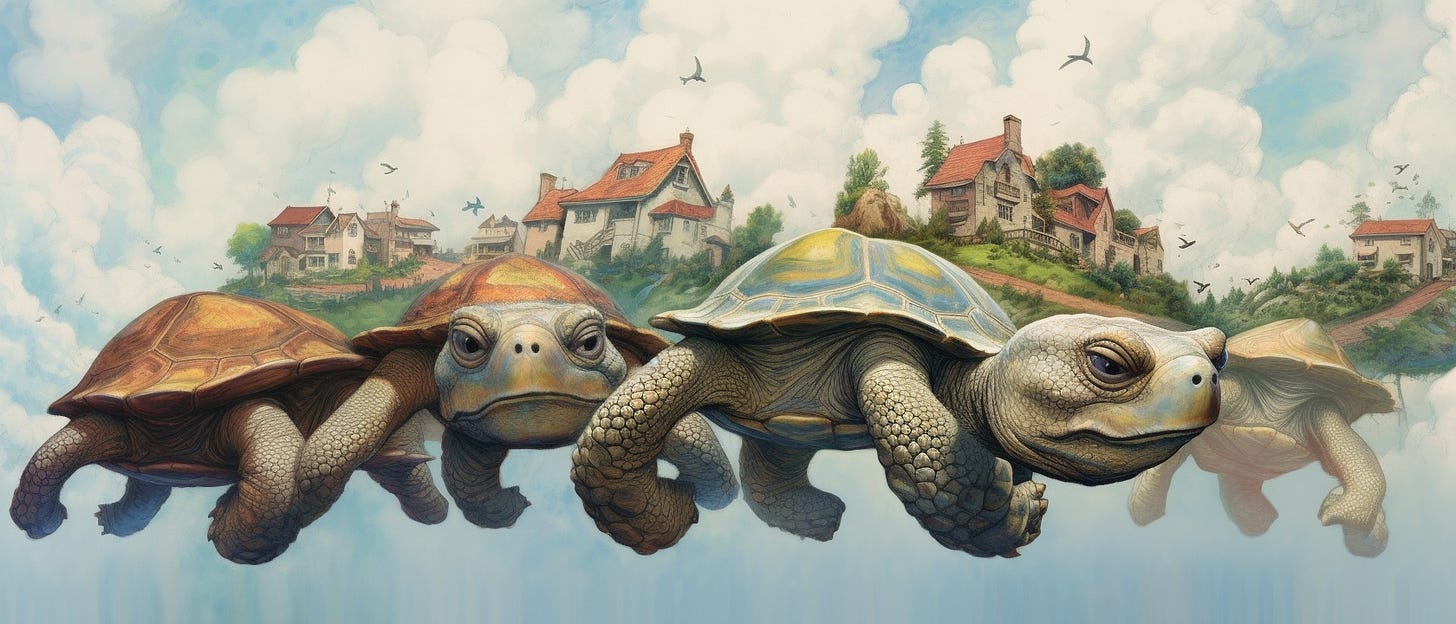In a world wrought with meta-crisis and poly-crisis, where the early Anthropocene appears poised to hit with an impact only slightly subservient to a meteor strike or a great flood, is it no surprise that we should see a proliferation of insistence on various prescriptions for cultural and social reinvention?
So often, this takes the form of any number of new governance structures, blueprints, or roadmaps for assessing our impact and designing our shared future towards the latest particular version of utopia. While I don’t mean to suggest that these views (many of them anyway) are founded in some Pollyanna-ish escape from all hardship and discomfort, they do seem to tend towards sharing a similar quality of linear, rational, one good solution mentality; some new form of governance, or social service, or new model of collective living.
I’m at least generally suspicious of any “new models” for human culture and society, at least to the extent that they purport themselves to be useful to the total of humanity.
Culture and society are living dynamic expressions, more artifact than essence of the activities and engagements alive underneath the give rise to their structures of existence.
In the words of our good friends in Sri Lanka, “We build the road and the road builds us.”
While we may usefully parse the world into categories like self, other, nature, etc., if we wish to understand more effectively our predicament, we must recognize fundamentally the holistic dimension of our condition.
Certainly, my internal psychology, values, aspirations, indeed even my very identity have been shaped enormously by the families and communities of which I have been a part. In turn, those collectives have been shaped and influenced by the structure of contextual artifacts such as money, road systems, governance structures (to say nothing of daylight, gravity, and other such “givens.”)
We can just as easily flip this on its head, to say that families and communities are usefully described as artifacts of the underlying individual values, power dynamics, and actions of the individuals who make them up. Those individuals and collectives them design and produce the artifacts they make, use, and leave upon the world.
You see, “it’s turtles all the way down.”
The Anthropocene is a powerful argument that the aforementioned crises are a direct result of the human species dynamic consisting of we individuals, our collectives, and our socio-cultural artifacts in relationship with “natural forces” of the cosmos at large.
In effect, we ourselves are a profoundly potent nutrient in the soil from which these large-scale conditions blossom forth.
Soil is, in this way, neutral. We seem just as ready to grow thorns as flowers. Given the apparent natural evolutionary forces, creativity and destruction reflect but two sides of the same coin, and this wild cosmos is just as likely to tear down a flourishing ecosystem as to build it up.
But this is where we, and our endless longing for love pleasing aesthetics come flapping like the proverbial butterfly into the picture.
Beauty is often the interplay between order and disorder, whether foreground and context, or woven together in a seamless majesty. While it is important to recognize our unity as the human species, it is also our diversity as cultural embodiments that gives rise to our beautiful majesty.
Some of us are undoubtedly headed for the moon, Mars, and beyond. Indeed, that journey has already begun and very little short of species annihilation would dissuade those dedicated to the task. Similarly, I would be hard-pressed to imagine an aboriginal community deep in the bush of Australia who would be willing to uproot the land upon which they have lived for 70,000 years simply for the novelty of converting it to steel for stagecoach.
We’ll leave aside for a moment the point elegantly made by the Davids, that when faced with civilization exchange, whether crossing from city to jungle, or bush to city, an extraordinary number of those when faced after the fact with the choice, tend to choose the more organic landscape as their preferred long-term abode.
The fundamental point being that we are faced in this time of apparent globalization with the task of finding our unity, not only as a species, but with all of our living world, without resorting to colonial constructs such as the best integrative idea for all.
To be sure, it is fine and good and wise and useful to design, prototype, and inhabit these constructs, after all what is evolution itself but boundless iterations of experiment in the vastness of dynamic context. Indeed, each and every one of us, should we survive this minor apocalypse, will need to find ourselves somewhere, and preferably in a community (human and otherwise) that suits our own unique sensibilities of inner peace, social morality, and individual and collective creative utility.
But we must also apply ourselves to the task of unity. The point bears repeating.





You have an important series in Parts 1, 2, & 3. I am cross posting the series on LinkedIn via your Open Field Awakening page: https://www.linkedin.com/company/54502604 Releasing one post a week. Bread on the waters... ripple effect, etc.
Really loved this piece.